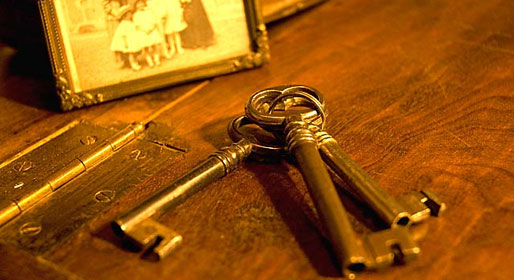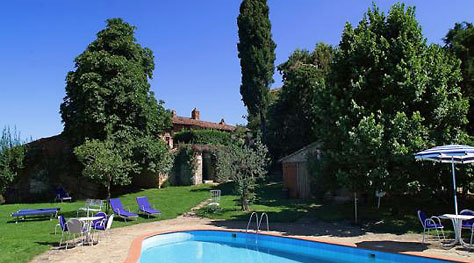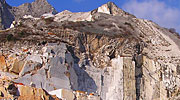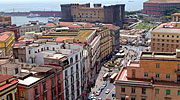Ghost busting
The hunt is on in five fantastic, phantom-friendly Italian castles
1. Fosdinovo's Malaspina Castle: when walls whisper
The area between Tuscany and Liguria, Lunigiana, is often referred to as the "land of a hundred castles". It is here, that, in the 12thcentury, the Malaspina family, built Fosdinovo Castle. The castle is still owned by members of the Torrigiani-Malaspina family, who are deservedly proud of the building's illustrious past, and of the times when the castle offered refuge to the exiled Dante Alighieri.
The tour of the frescoed halls, bedrooms, torture room and external walkways, with views of the Sea of Liguria, invariably includes the telling of the ill-fated love story of Lady Bianca Maria Alosia, the daughter of Jacopo Malaspina, and Oliva Grimaldi, a young man of humble origins. The discovery of their liaison resulted in Bianca being walled up, alive, in a castle cell. It is said that the ghost of Bianca Maria Alosia''', with her long hair flowing, continues to haunt the castle.
Nocturnal tours of the castle are the spookiest of all!
2. Poppi Castle and the ghost of the licentious Matelda
The 12th century Castle of Poppi, in the heart of the Casentino, is one of Tuscany's best conserved fortified edifices, still sporting its original dry moat, drawbridge, mullioned windows and wooden balconies. The history of the fortress is linked to that of the Conti Guidi family who lived here for over 400 years. The entire castle, including the library, which is home to some 25.000 volumes, is open to the general public.
Like all ancient castles, Poppi Castle has a resident ghost: the licentious Matelda who, legend has it, used to hurl her unfortunate lovers into a well when she had finished with them
This anti-social practice resulted in her being locked up in the 'Torre dei Diavoli' (Devils' Tower) by the disgruntled locals. It is said that her restless spirit stills roams the castle, looking for gullible young men to seduce.
3. Montebello Castle and the Azzurrina mystery
Other members of the Guidi dynasty, this time from the collateral branch Guidi di Bagno, took over from the Malatesta family as owners of the Castle of Montebello, sited on the high plains between Romagna and the Marche, close to the Adriatic coast. Montebello Castle conserves the legends and secrets which make it one of the most mysterious in the whole of Italy. Within its walls, visitors can still come across ancient strongboxes and chests dating back to the time of the crusades, concealed passageways, sudden pit holes, and the Azzurrina Tunnel, named after the young daughter of the Feudal chief Uguccione who, in 1375, mysteriously disappeared whilst chasing after a ball.
According to legend, every five years from the time of her disappearance, Azzurrina's ghost has appeared during the summer solstice.
During the tour of the castle, visitors are able to listen to the recordings of what some believe to be the lost child's cries.
4. Castel Sant'Angelo, Rome: Popes, a prison and Puccini
This castle, one of the symbols of Rome, was originally built as mausoleum for the Emperor Hadrian in the 2nd century B.C. Over the centuries the immense cylindrical edifice was transformed into a fortress and papal residence, complete with covered fortified corridor linked to the Vatican palaces, which, in case of danger, provided a strategic escape route for the Pope.
The name of the castle is linked to the tale of the apparition of an angel, who drew an end to the plague raging through the city during the pontificate of Gregorio Magno
In the past, Castel Sant'Angelo served as prison, in which the most gruesome of tortures and executions were carried out and, in this guise, was chosen as the setting for one of the greatest Italian operas: Giacomo Puccini's "Tosca". Today the castle is home to the National Museum of Castel Sant Angelo, in which a number of impressive art collections are housed.
Castel Sant'Angelo: Skip The Line
Overlook the Tiber from this iconic mausoleum-turned-museum.
Get your tickets now!
5. Castel dell'Ovo, Naples: mermaids, magicians and medieval man-eaters
The history of Naples' Castell dell'Ovo is linked to an ancient of tale of how, on the tiny islet of Megaride on which the castle is constructed, the body of the mermaid Partenope was found. The origins of the castle date back to the times of the Dukedom of Naples. It owes its name, "The Egg Castle", to the magician Virgilio who, according to the legend, hid a magic egg in a cage there, proclaiming that as long as it remained intact the city of Naples, and the castle, would be free of disaster.
Other popular stories regarding the castle, include that of the 14th century queens, Giovanna I and Giovanna II, who had the unpleasant habit of throwing their lovers down the castle's secret tunnels, as soon as they began to tire of them
Today, Castel dell'Ovo is used as conference center and exhibition venue. Sections of the castle, including the Normandia and Maestra towers, are still open to the general public.


























